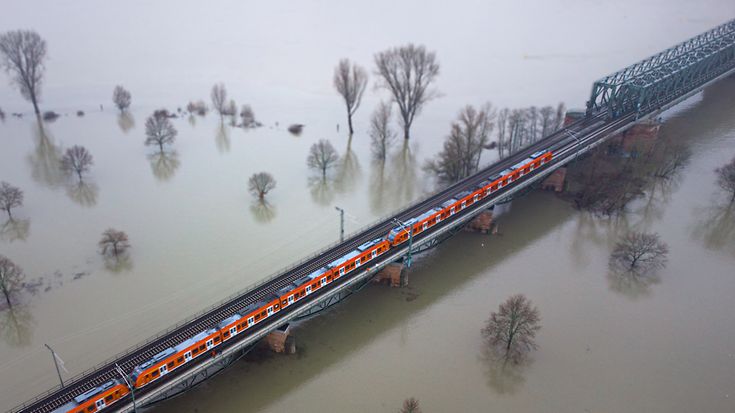Limiting damage, extending insurance coverage
Climate change has long been underway - with dramatic consequences in this country as well. For the future, the focus must be on containing the effects: via structural adjustments, better education and an expansion of insurance coverage. What other political positions on climate protection and climate change does the insurance industry hold?

Climate protection is the guiding theme of the German government and runs through all policy areas as a cross-cutting task with the aim of aligning the economy and society with the 1.5-degree path of the Paris Climate Agreement. Climate protection measures therefore occupy a central position in political action - from a climate check in legislative proposals to CO2 pricing, the massive expansion of renewable energies, the simplification of planning and approval procedures, and the activation of private capital for the announced transformation projects.
The plans of the traffic light coalition thus promote the concerns of insurers: This is because the sector has an interest in investing in the preservation of an environment in which risks remain insurable and are suitable for limiting climate change and its consequences.
Beyond climate protection, however, we must increasingly concern ourselves with protection against the consequences of climate change. The climate changes we observe today are not the result of current emissions - they are a legacy of the past.
Our positions on climate protection and climate change
-
Modernising building regulations
A key starting point for preventive measures is German building regulations and construction planning law. After all, we are planning, building and refurbishing the building stock in Germany today, which will have to cope with the consequences of climate change in the years to come. Because assumptions and scientific findings from climate research are insufficiently taken into account in zoning law, building codes and legal ordinances, development plans are still being drawn up in risk areas, too much land is being sealed unhindered and materials are being used that cannot withstand extreme weather events. The protective goal of "climate-adapted construction" should therefore be included in the regulation of building legislation, so that how the consequences of climate change are exactly to be countered in the coming decades would already be anchored in the substantive law for the planning, construction and renovation of the building stock.
-
Setting up natural hazards portal
The announced expansion of a digital portal for environmental data into a publicly usable archive for mapping and species data is a right step. However, it should be implemented in a more ambitious way: Insurers suggest that existing environmental, weather and geospatial data be pooled into a national management system for climate change-related risks and made publicly available for individual, site-specific assessment and evaluation of these risks. Only those who are aware of the hazards posed by floods and heavy rain, storms and hail can take preventive action and sustainably reduce risks.
-
Extending insurance coverage
Uniform standards for the assessment of natural hazard risks, bans on building in floodplains, support for private households in individual prevention measures - all these projects are suitable for countering the consequences of climate change. Nevertheless, there is a need for supplementary protection through insurance. After all, in times of climate change, devastating natural disasters such as those on the Ahr and elsewhere are no longer singular events, but can affect anyone. Insurers therefore want to flank the federal government's indispensable prevention measures with necessary insurance coverage and ensure that every home has insurance against natural hazard risks. The prerequisite for this is framework legislation by the federal government that makes it possible to provide protection against so-called “natural hazards” not only for new contracts in residential buildings insurance, but also to add this natural hazards protection to existing contracts (old policies) in a legally secure manner. This solution would make ad hoc state aid superfluous. In combination with an opt-out provision, it would avoid the constitutional risks of compulsory insurance and would also be easy to implement in a functioning market: A residential building insurance policy supplemented by natural hazards protection would then become standard.
-
Promoting agricultural multi-peril insurance
Storms, droughts and an increase in weather-related risks lead to crop losses and yield losses in agriculture. It is therefore right to strengthen sustainable agriculture that is ecologically and economically viable. To compensate for weather-related yield losses in agriculture, insurers have an approach that has been tried and tested in other European countries: agricultural multi-peril insurance. Without government support, however, it will not find the dissemination necessary to cover weather risks on a private-sector basis. The agricultural ministers of the federal states are therefore proposing funding for this insurance under the Joint Task for Agricultural Structure and Coastal Protection (GAK). Ex-post aid from the public sector to farmers in the event of crop failures or crop losses would thus be avoided, and a system of forward-looking precautions would be created that makes expenses calculable and provides legal certainty in the event of a claim.